[ART HISTORY] The Hunters in The Snow 🎨
Snow really ought to ruin a painting. Everything that's interesting in the landscape, all the colors and all the details, have been buried in a monochrome layer, a blanket that evens everything out into a great whiteness.
But snow is not only whiteness, and the artist who attempts to capture all shades of snow with white alone, is as doomed to failure as someone trying to paint the forest with only greens. The snow can shine intensely in white, like a cold sun that radiates from the ground, but it can also be in shades of blue, and when it thaws it can be gray. It can also be pinkish and yellow. The snow's color palette can also be defined by what it's not: nature's chlorophyll-saturated greenness. Paintings of snow covered landscapes are the absence of green. We first notice that the green is missing, then we see the snow.
Pieter Bruegel the Elder's (~1525 – 1569) painting "The hunters in the snow" is the alpha and omega of snow art, a magnificent snowfield that all artists thereafter have had to relate to if they want to capture the world of the white flakes. Bruegel painted several other depictions of snow, but it's "The hunters in the snow" that stuck in the collective consciousness.
The painting originates from a period of extreme cold. The years of 1564-65 had brutal winters and were the beginning of what is known as a little ice age, that sent Europe into a horrible period of failing crops and starvation. Bruegel's painting shows a group of hunters returning to civilization after a hunt. The prey is quite lean. He provides a striking view of a valley, where the hunters in the foreground are moving downwards and have a visible fatigue that is contrasted with the ice skaters on the frozen lakes. Others are engaged in collecting wood or managing the fire outside an inn. The sky is leaden, the snow is wet and heavy, the tree trunks damp and black.
In "The hunters in the snow" Bruegel unites the playfulness and seriousness of the snow, which is one of the contributing factors that makes the painting so powerful. For the ice skaters and the children playing, the snow is most welcome and a cause for fun and games. For the hunters and the adults trying to provide for their families it's partly a curse.
The three men are walking through the snow. Their backs are bent, their eyes are fixed on the ground, as they usually are in times of exhaustion. Their feet are heavy as they silently walk across the wet snow. They have probably been away since dawn. One of them carries the prey, a beautiful red fox, suspended on his hunting spear. Behind them, through some black, bare trees, follows a pack of shaggy hounds. The small group passes an inn, where some people have gathered around a fire. But the men don't stop, because they're probably close to home now; maybe they're heading toward one of the small houses lying below them at the foot of the slope.
Judging by the milky, slightly muffled light, it's late afternoon: it's not yet so dark that there's cause to light a candle. Those that can are still out, utilizing the waning daylight.
It's early winter, perhaps only the beginning of November: there are still some withering leaves on a bush, and the large mill ahead of them was until recently in use - the mill wheel is crowned with long icicles. In addition, the snow cover is quite thin, I guess around a decimeter, and on the ponds below them, the ice is still shiny.
The painting is made up of a number of bold diagonals, which helps to strengthen the sense of movement that is so evident in the three figures that gave the painting its name. The black verticals of the trees only reinforce the effect. As a spectator your gaze follows the men, the magpie, and the slopes down towards the icy pond with the playing people who are the midpoint of the painting. And when the eyes have passed the greenish-blueish ice they bump into the distant mountain wall and are brought back to the pond again, with the help of even more converging diagonals.
The mountains, clearly show that it's a fantasy landscape, a strange cross between Bruegel's own flat Flanders and the dramatic alpine scenery he witnessed during his Italian journey. The fact that the landscape is fictitious stresses that what is captured isn't primarily an external reality, but an interior. "The hunters in the snow" is about an attitude and a state.
All of the sounds in this landscape are muted by the snow, especially at a long distance. The squeaking from an ox cart loaded with firewood on the road down by the pond would probably be heard very well during another season, but now it has been stilled into a vague murmur. Standing where we stand in the image, what sounds would we then be able to catch? The steps in the snow, the crackling of the fire outside the inn, of course. Maybe the panting of the weary dogs. Possibly also the agitated song from the magpie that just lifted from one of the naked trees, and now sail away as the hunters approach. To all of this must be added a web of laughter and delighted screams from the blue-green ice full of playful children and adults: some of them drawn on small sledges, some are playing with a ball and sticks, others seem to be playing a variant of curling, a lot of them skate while others just shuffle around on the smooth surface.
Bruegel painted "The Hunters in the Snow" in 1565, as part of a cycle of six paintings depicting seasonal shifts. Like so many of Bruegel's works, the suite was commissioned by a wealthy collector, in this case the merchant Niclaes Jonghelinck, who used them to decorate his great house in Antwerp. It's not an accident that the cycle consisted six paintings, but rather reflecting the farming culture's view of the seasons, a view that in many ways was more natural and complex than ours. The medieval year had its beginning in March and the first painting "The gloomy day", shows a landscape that is just beginning to wake up after winter; the second painting has unfortunately disappeared, but represented spring; the third "Haymaking", early summer; the fourth "Harvest", late summer; the fifth "The herd returns" autumn; and the sixth "The Hunters in the Snow", winter.
This nature-oriented feature is impossible to avoid in Breugel's paintings, the people are not only placed in the landscape, but are very much a part of it, and their various chores marks the phases of the year at least as well as the landscape's own changes - the latter, incidentally, well captured in the cleverly assembled but also subdued color scale that colorize the suite: from brown in "The gloomy day", green in "Haymaking", yellow in "Harvest" and ocher in "The herd returns", to white in "The hunters in the snow".
The atmosphere of serenity found in "The hunters in the snow" is partly due to the era, but also due to the season in itself. Because what we behold in the painting is an agricultural community, entirely safe in its own predictability and lack of change, a society in unity with the rhythms of nature - far away from the unwavering prodding of the factory culture, day in and day out, month after month. A sort of long lost harmony. Each month had its own pace and its own, given chores. It's no coincidence that most of the people in the painting are occupied with playing. The burden was eased during the winter months, not least because the short days on the northern hemisphere, which made it difficult to perform such chores that required daylight.
But there were also useful chores, chores for which the snow by no means was an obstacle, but rather an advantage. Some of them are revealed in the painting. The tracks in the snow gave the hunters a welcome advantage against the prey. Many frozen waterways offered fairways far flatter and more comfortable than the uneven and unreliable roads that otherwise were used. Far in the distance, we can see a horse-drawn sleigh on the ice.
This is what we can see in Bruegel's painting: Winter is not a season of stagnation, waiting, torment and frigid death, but of resting, preparation, joy and defiance, and the snow is a prerequisite of this life.
— SteemSwede

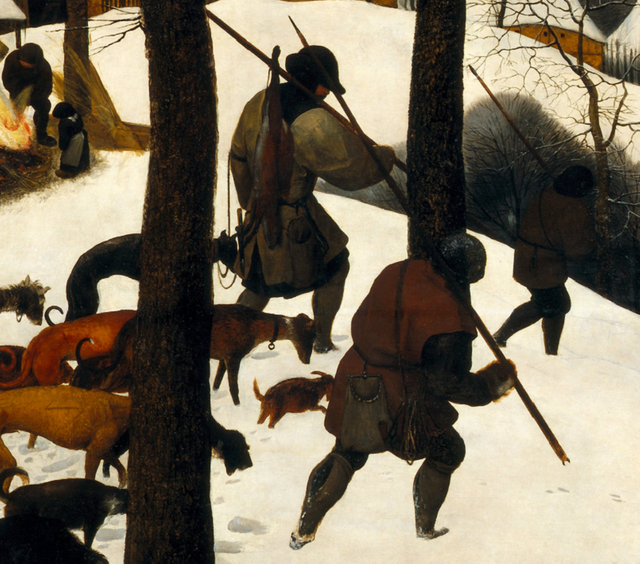
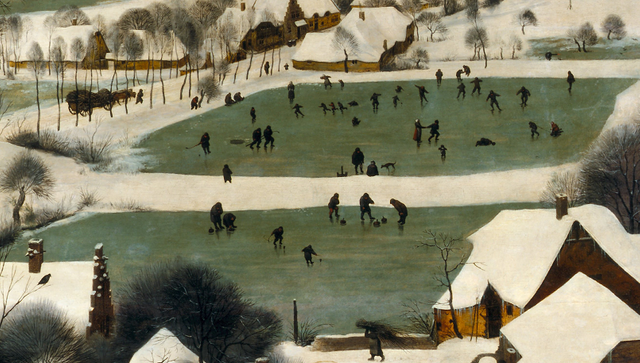
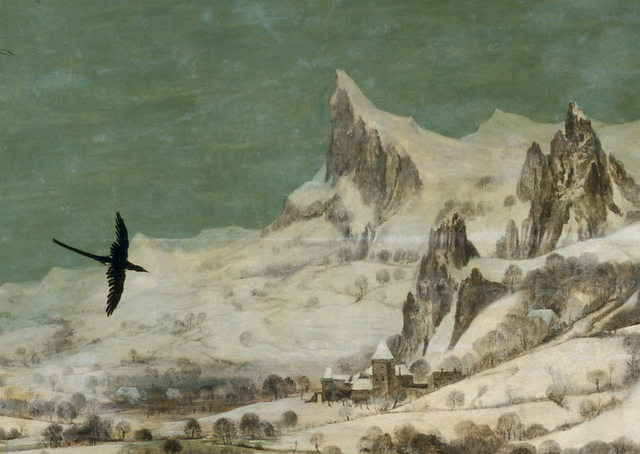
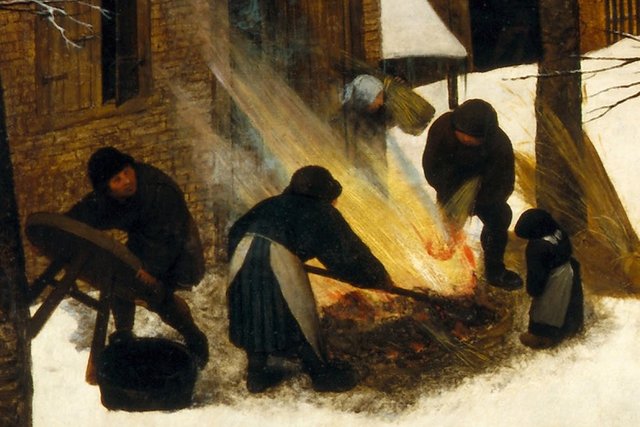
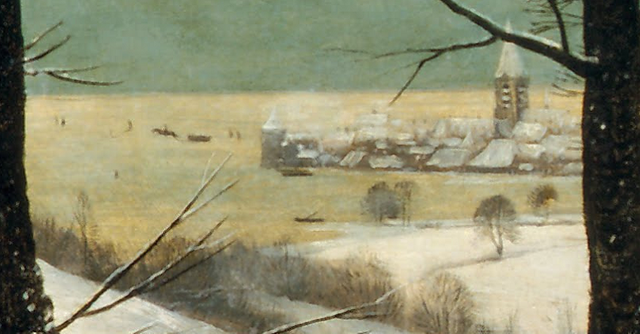
outstanding, thank you. for some reason I remember this painting from my early childhood, just seeing it is extremely nostalgic.
It's one of those iconic images that has the ability to etch itself in the mind. For me I will always associate it with the levitation scene in Tarkovsky's Solaris:
I stopped it a few seconds in, because it looks interesting and I'm going to see if I can watch the entire movie, but thank you again!
It glads me to hear, you must watch Tarkovsky's entire production, before you die :p
An excellent art critique of Bruegel. I really enjoyed reading this :))
Thank you! Glad you enjoyed it :)
I added some detailed images to the article just now btw.
Wow! More lovely Bruegel crunchy snow images for the advance of Winter ... let the January stars twinkle.* * *
up voted and followed
Thank you!
This post has been linked to from another place on Steem.
Learn more about and upvote to support linkback bot v0.5. Flag this comment if you don't want the bot to continue posting linkbacks for your posts.
Built by @ontofractal